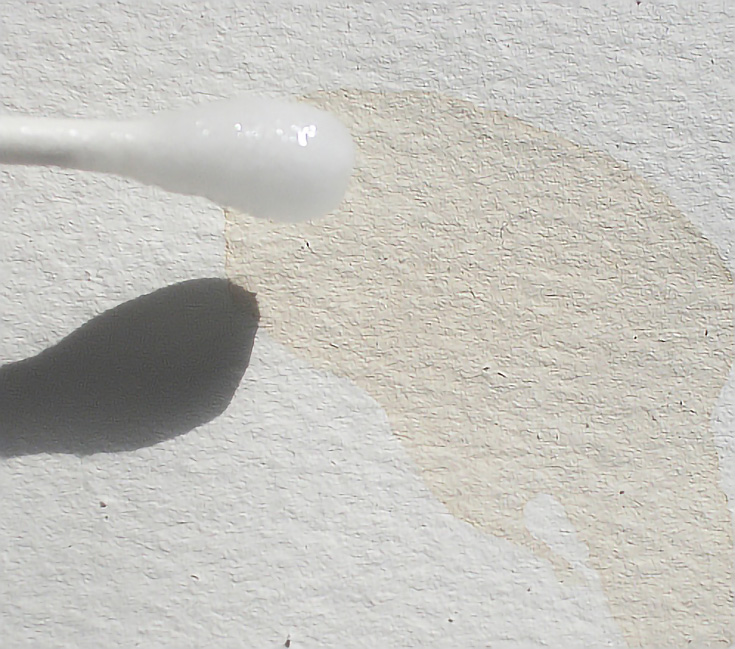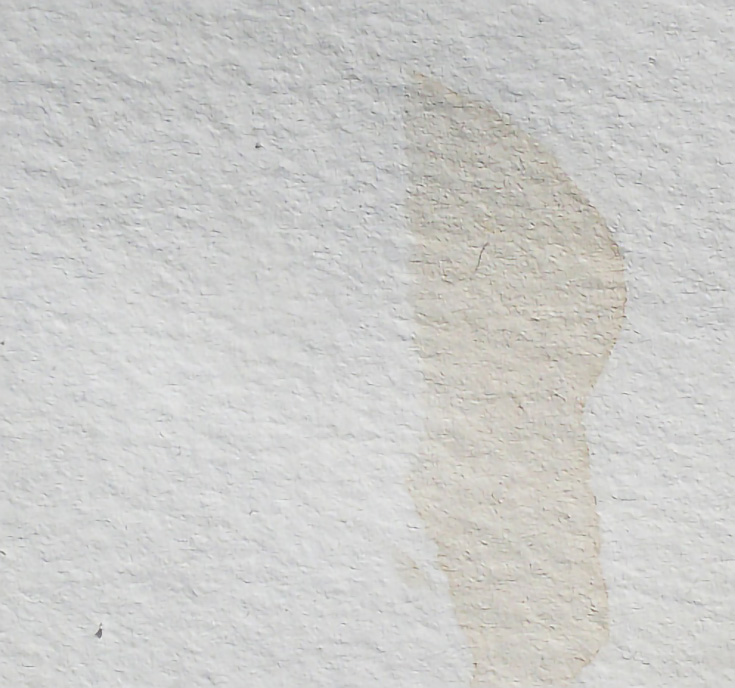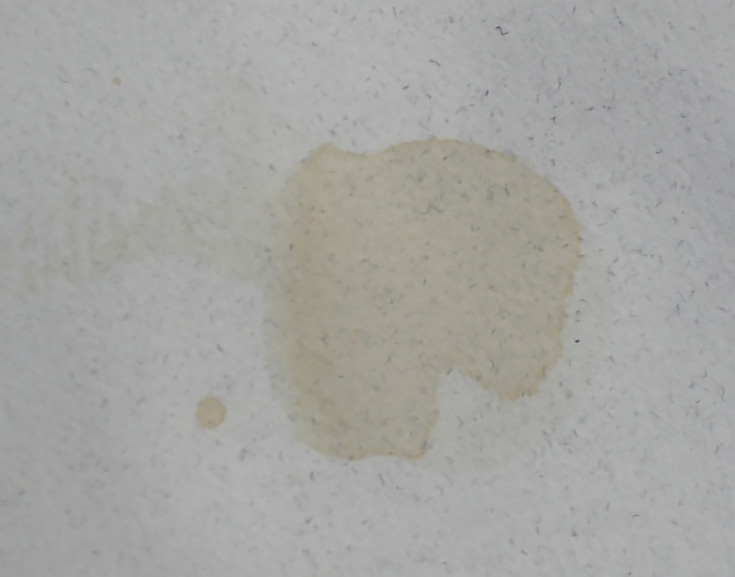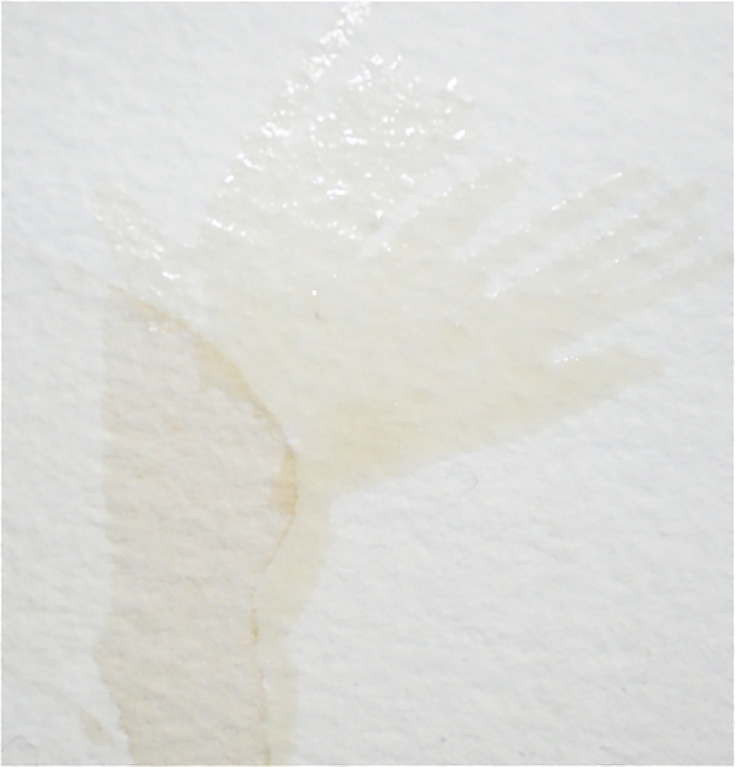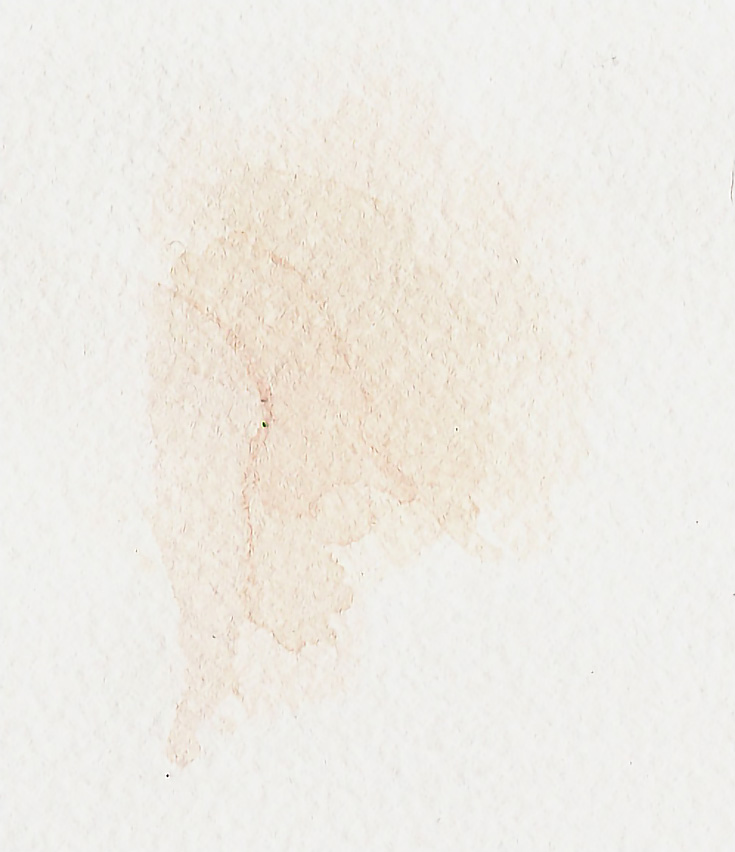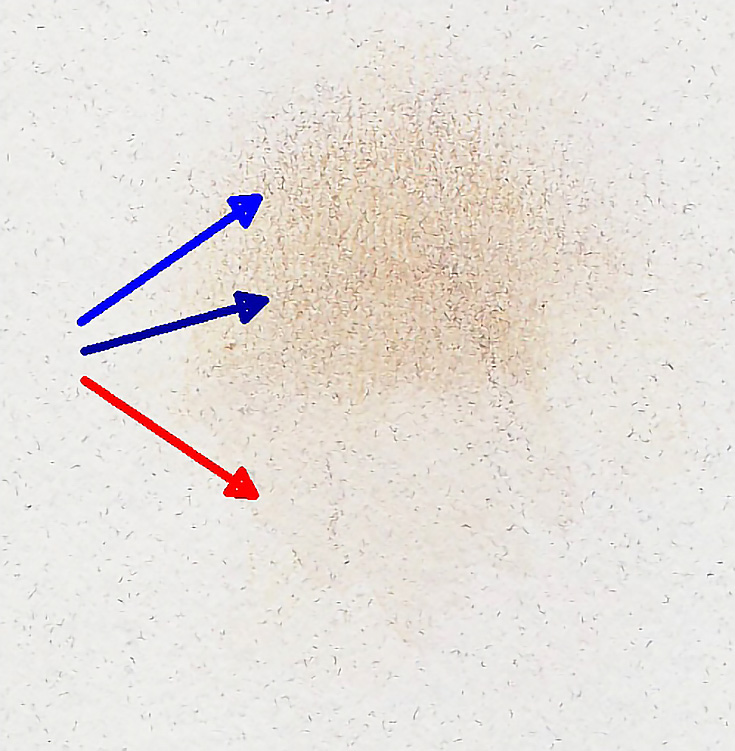Last week I shared some tips for removing light spills and stains from watercolor/drawing paper. Today I’m going to expand on that by describing a more aggressive stain removal tip, as well as a couple of ways to conceal stains, for those times when a bigger, or darker, spill wreaks havoc on a drawing.
Make sure to check out my previous article, if you haven’t already—but if those steps don’t work, it’s time to get a little more aggressive with chlorine bleach. The bleach will not technically remove extra color, but it will fade it.
Just be careful; too much bleach will weaken paper fibers and damage the paper, and the line between the right amount and too much is very thin. Proceed with caution at first until you see how the paper and bleach react to each other.
Using bleach to remove stains on watercolor paper
Below you’ll see the stain I’m working on removing (it’s dried black coffee on watercolor paper). Naturally, I started by using a moistened paper towel to blot the stain. This is what was left behind after that:
All right, now on to the bleach.
I switched from folded paper towel to a cotton swab for better control, dipped the swab into clean water, and then into a small container of bleach before lightly stroking half of the stain (the top left portion) with the dampened cotton swab.
I then folded a piece of paper towel, moistened it, and blotted the stain. Then I dried it with a fresh piece of paper towel.
Finally, I blotted the paper with damp paper towel to remove as much bleach residue as possible, then set the paper aside. Once dry, the paper was nearly as good as new.
As you can see above, the place where I used the bleach lightened the stain practically to the point of disappearing.
Using bleach on drawing paper—good or bad idea?
The drawing paper I tested wasn’t very sturdy, so just blotting the stain with water caused buckling. (You can see the slight buckling of the paper in the illustration below.) It also was a very light gray paper, so I was pretty sure that bleach was likely to alter the paper color as well as the stain, but I still wanted to give it a shot.
Here’s the stain after blotting with water:
I dipped a cotton swab into clean water, then into bleach, and lightly stroked it across the stain. Then I blotted and dried the area a couple of times and let the paper dry.
Once again, the stain all but disappeared with a single treatment of bleach. But, by the time I blotted and dried it a couple times, the bleach had also discolored the paper.
Is the damage enough to ruin the paper, or show up in a drawing?
That would depend on the type of drawing I intended for the paper. The damage probably wouldn’t show through heavy layers of color, but if I had been doing a vignette style drawing and this happened in the background area, it might mean starting over or it might mean changing the composition to include a full background in order to cover the damage.
Alternatives to using bleach
Of course, there are other ways to conceal tough stains besides bleaching. One way is to use the same substance to stain the rest of the area, then work over it as you would over unstained paper. If you’re good with a brush, you can feather the stain so it fades into the surrounding paper and will be less noticeable (or completely invisible) when the drawing is finished.
Below is my attempt:
As you can see, I dipped a small, round brush in black coffee, then painted coffee around the stain. At the top, I started at the stain and stroked away from it. At the bottom, I stroked along the edge and let that dry, then stroked away from it. I let the paper dry between each of three or four layers of color, blotting between each one.
Because this paper is watercolor paper, I then bathed it in clean water, blotted excess moisture, and let the paper dry. I will say that this method probably works best with fresh stains and heavier papers. The final result is below:
Doing the same thing on drawing paper is a little bit tougher, mainly because watercolor paper is designed to take water and drawing paper isn’t. However, you can blend the stain into unstained paper using colored pencils—just match the colored pencils you use to the color of the stain and work lightly around it.
I chose Prismacolor Verithin pencils because that line of pencil has a lower wax content and doesn’t add a significant amount of wax to the paper. The only downside is that Verithin pencils have a limited color selection, so I had to blend two colors to approximate the color of the stain.
Beginning with Goldenrod, I layered color around the stain with very light pressure using vertical strokes, followed by a layer of Dark Umber. I put three or four layers of color around the stain, then began layering over the stain to blur the edges.
After three or four layers of each color, I increased the pressure to medium light and blended with a fingertip after each layer.
The result isn’t a complete covering of the stain, but it is no longer quite as evident. The red arrow is the stain before colored pencil work, the dark blue arrow shows the stain with colored pencil layered over it, and the bright blue arrow is the same combination of colors applied to unstained paper.
As I’ve mentioned before, the very best solution for paper stains is to avoid them if at all possible. But they aren’t the end of the world for a drawing and, in fact, they can be the gateway to something unexpected.
At the very least, now that you know how to fix stains, there’s no need to assume that a stained drawing is destined for the trash basket. Instead, take time to experiment! What do you have to lose?
This post may contain affiliate links.

